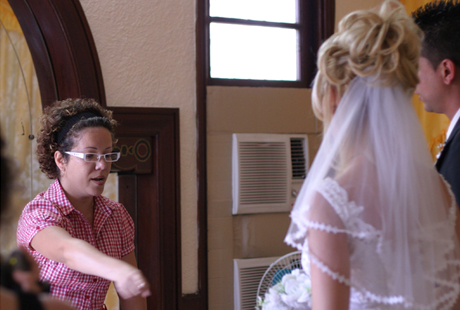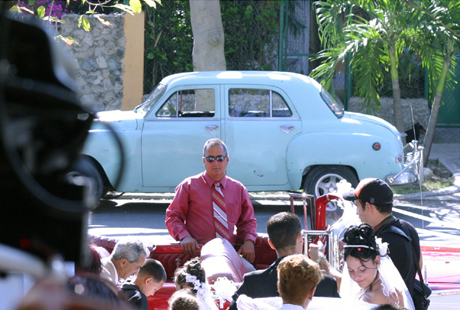Cactus & Hedgehog
Film Production Company





Critics



Project: Musicbox
Author: Curt Madison, PhD
Date: January 8, 2014
Musicbox is an early film done by a young crew we need to track. They will be continuing to produce intriguing works deftly done in multiple languages. Director Orisel Castro Lopez, born in Havana in 1984, brings a sensibility to the apparent regimented chaos of the institution of a marriage ceremony. York Neudel began life in Germany. His photography captures the subtle emotions and ironic juxtaposition. Together they give us an understated, nuanced look at an event that is well known to everyone. They challenge our notions of uniqueness and representation.
Music Box takes place on a single day in the lives of twenty-one couples facing four official registrars and a phalanx of five professional photographers. The crew are simply observers among the throng of family and friends in the heat of waiting. Castro and Neudel give us a perspective from their position on the side of the event as couples arrive, primp, affirm their vows then exit the Marriage Palace in Havana.
The only music we hear on the sound track is the intermittent chiming of a wind up music box. The irony of a mechanical, repetitious accompaniment during a significant milestone in social life is present, yet understated. The couples about to be married are directed to sit and stand in certain ways, even to place their hands together before the magistrate in the one right manner.
Each movement of the couples seems orchestrated by the State or dictated by rigid custom. Yet we know that young couples are unlikely to be so constrained. The video lets the viewers engage by inner dialog about what is “normal” in Havana and what is truly extraordinary about this day in this place.
Music Box is a very good video for instructors to raise questions about observing nuance and letting a scene play out for the audience to find their own conclusions. We get to see twenty-one couples in various stages of the brief ceremony, but we don’t get insight into their personal motivations. We get many close-ups of brides and grooms staring intently at something, but we don’t see what they are looking at. We can tell that the film crew is blending into the scenery, but we don’t get to see them onscreen. The video shows marriage processing, but we don’t get a sense of the motivation of individuals. We are in a building looking out to a street, but never in the street looking at the context of the building in the city.
Every aspect of the video from the photography to the flowing story line is in a tight frame like an observer intently focused on the task at hand. The broader context is left to the imagination of the audience. We are intrigued by what is not articulated. No doubt the audience of this video will think about their own filmmaking or their own marriage or their own deep breaths while jumping through bureaucratic hoops. Just as in the observations of a passer-by, we don’t get privileged information about what is going through the minds of the participants. There is no voice over narrative to contain our assumptions. Yet there is a clear choice by the editors of a progressing force.
The poster materials for the video on the DVD mention that the work is a video about marriage made by unmarried people. And, it appears, staunchly so for the foreseeable future.
The DVD includes subtitled versions in Spanish, German, English and Portuguese along with a photo gallery and a substantial review session by prominent filmmakers. This work will be of interest to anyone studying the art of documentary filmmaking. If you are in film school now or thinking about it, you need to see Music Box.
About the author
Curt Madison produced directed and edited ethnographic documentaries for twenty years in Alaska. He has a PhD in Communication from University of Arizona.